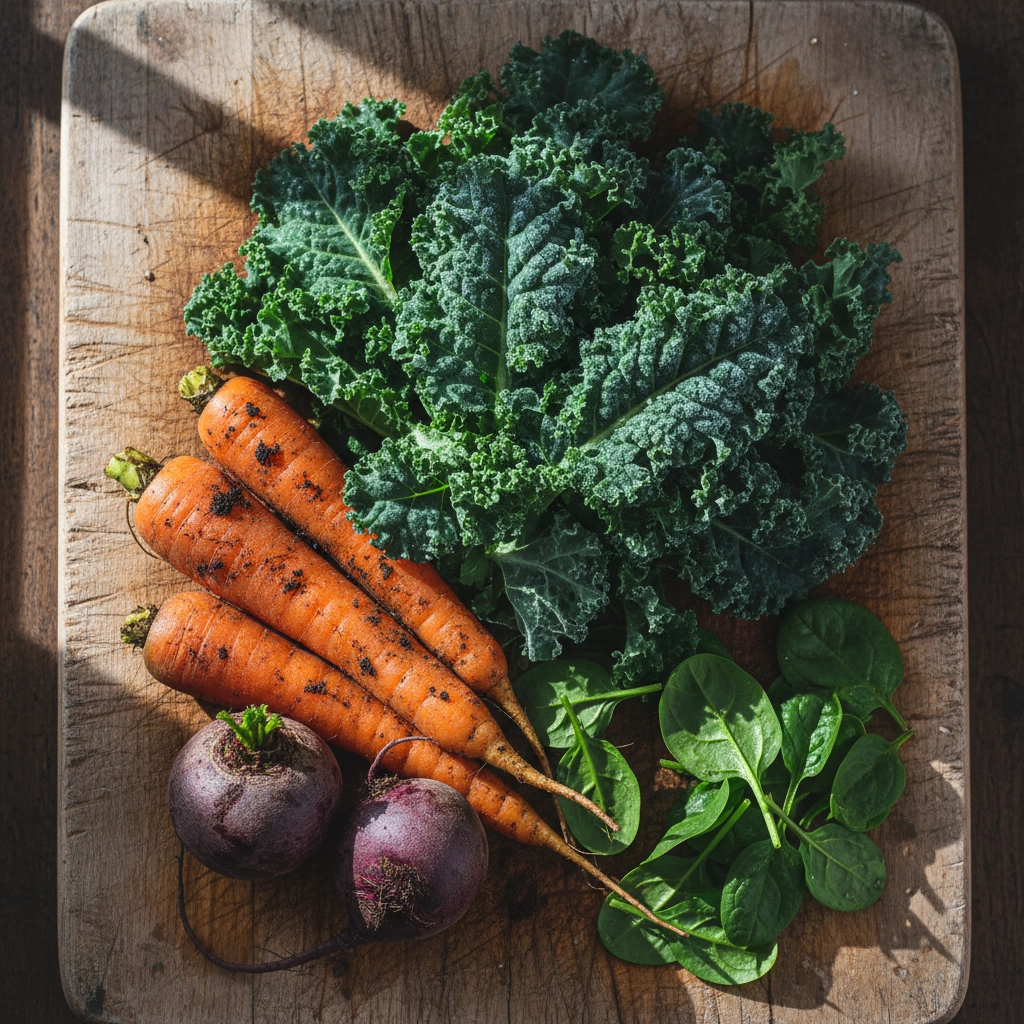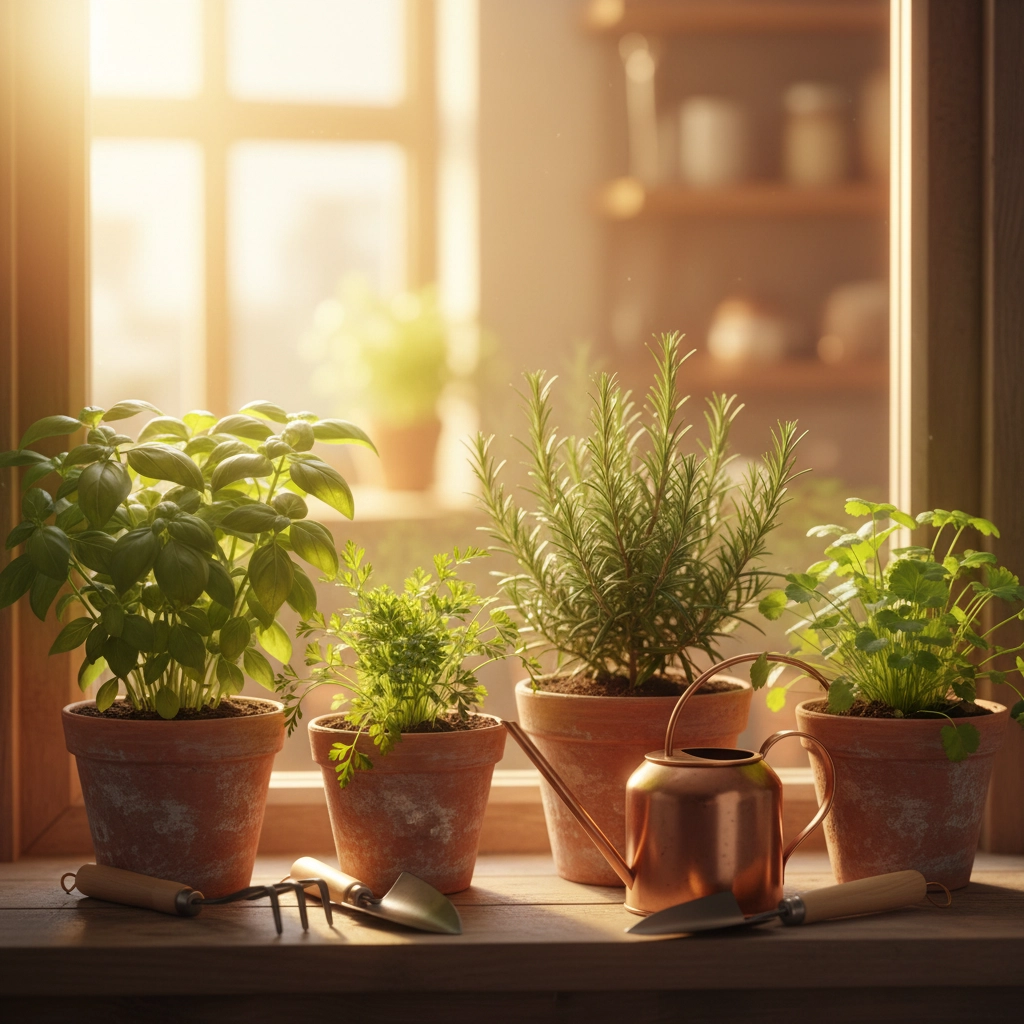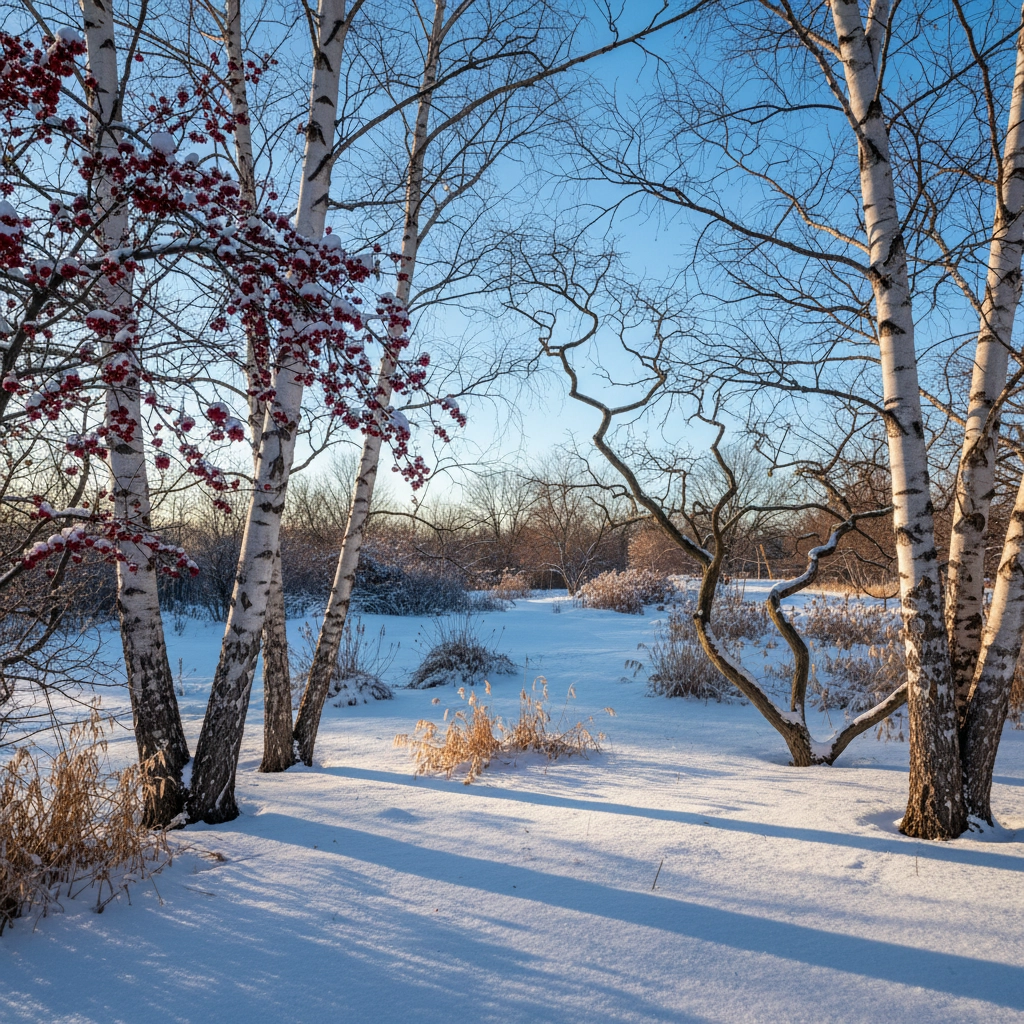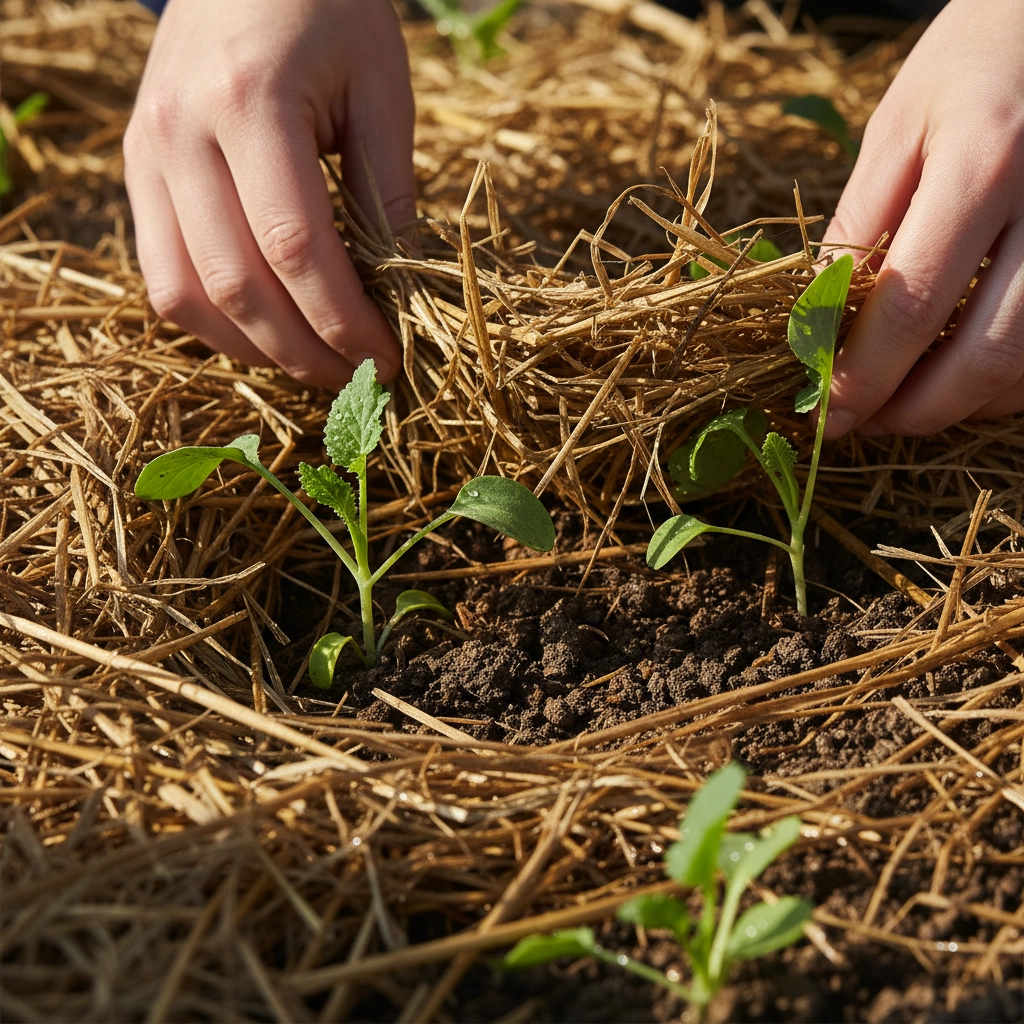Winter Gardening in Missouri: Best Plants and Tips to Keep Them Thriving
- Randyb Dinwiddie
- Oct 31
- 5 min read
Think winter means your garden has to go dormant? Think again. Missouri's climate actually offers some fantastic opportunities for year-round gardening – you just need to know what plants can handle the cold and how to give them the care they need.
Whether you're a busy business owner looking to add some green to your property or a homeowner wanting fresh herbs all winter long, there are plenty of options that won't break your back or your budget.
Hardy Vegetables That Love Missouri Winters
Let's start with the practical stuff – food you can actually eat. Some vegetables not only survive Missouri winters, they actually taste better after a frost.
Leafy Greens Are Your Best Friends
Spinach is basically indestructible. Plant it in late fall, and it'll keep producing through most of the winter. Same goes for kale – in fact, cold weather makes kale sweeter by converting starches to sugars. Arugula, lettuce, and Asian greens like bok choy are also solid choices.
Root Vegetables for the Long Haul
Carrots, radishes, and turnips can handle serious cold. The trick is to plant them early enough in fall so they're established before the deep freeze hits. You can even leave carrots in the ground all winter and harvest them as needed – just mulch heavily.
The Cabbage Family Champions
Brussels sprouts, cabbage, and broccoli are cold-weather superstars. Brussels sprouts especially get better after frost. Plant these in late summer for winter harvest.

Indoor Herb Gardens Made Simple
Not ready to brave the outdoor elements? No problem. Growing herbs indoors during winter is easier than you might think, and way more rewarding than buying those expensive little plastic containers at the store.
Foolproof Indoor Herbs
Basil, parsley, chives, and cilantro grow well in sunny windows. You don't need fancy equipment – just decent potting soil, containers with drainage holes, and a south-facing window.
Rosemary and thyme are practically unkillable once established. They actually prefer being a little on the dry side, so they're perfect for busy people who forget to water occasionally.
The Window Herb Setup
Get containers that are at least 6 inches deep. Drainage is critical – more herbs die from overwatering than underwatering. A simple saucer under each pot catches excess water.
Place them in your sunniest window, and turn the pots a quarter turn every few days so they grow evenly. If your windows don't get much sun, a basic grow light works wonders.
Native Plants That Shine in Winter
Missouri has some amazing native plants that look fantastic when everything else is brown and dormant. These are perfect for business landscaping because they're low-maintenance once established.
American Holly provides evergreen color year-round and produces bright red berries that birds love. It's tough, drought-tolerant once established, and gives you that classic winter look.
River Birch might lose its leaves, but the interesting bark texture becomes the star of the show. Multiple stems create natural visual interest that looks professional without being fussy.
American Beautyberry produces incredible purple berries in fall that last well into winter. It's a conversation starter and requires almost zero maintenance.

Soil Prep That Actually Matters
Here's the thing about winter gardening – success starts with your soil preparation in fall. Don't worry, it's not complicated.
The Simple Soil Fix
Before planting anything, work some compost into your soil. Not fancy stuff – just basic compost from the garden center works fine. This improves drainage (important for preventing root rot in wet winter weather) and adds nutrients slowly over time.
For containers, use quality potting mix, not garden soil. Garden soil gets too heavy and dense in pots.
pH Matters More in Winter
Most vegetables prefer slightly acidic to neutral soil (pH 6.0-7.0). Winter conditions can make pH swings more dramatic, so it's worth testing your soil and adjusting if needed. Lime raises pH, sulfur lowers it.
Mulching Without the Fuss
Mulch is your secret weapon for winter gardening success. It regulates soil temperature, retains moisture, and suppresses weeds. But you don't need to overthink it.
What Works
Straw, shredded leaves, or grass clippings all work well. Straw is probably easiest – just spread it 3-4 inches thick around plants, keeping it a few inches away from stems to prevent pest problems.
For paths between beds, cardboard covered with mulch creates weed-free walkways that look professional with minimal effort.

Frost Protection Made Easy
Missouri's unpredictable weather means you need simple frost protection strategies that don't require a lot of setup.
Row Covers Are Game Changers
Lightweight fabric row covers can extend your growing season by protecting plants from light frost. They let light and water through but trap warm air. Just drape over plants and secure with rocks or clips.
The Water Jug Trick
For individual plants, clear plastic jugs with the bottom cut out make instant mini-greenhouses. Remove the cap for ventilation during warm days, replace it on cold nights.
Cold Frames for Serious Gardeners
A cold frame is basically a box with a clear top that acts like a mini greenhouse. You can build one from scrap wood and an old window, or buy a simple kit. Perfect for starting seeds early or extending the harvest of greens.
Watering in Winter (Yes, You Still Need To)
Plants still need water in winter, but the rules change. Overwatering kills more winter plants than cold does.
When to Water
Check soil moisture by sticking your finger into the soil. If it's dry an inch down, it's time to water. This might be once a week, or once a month – it depends on your plants and conditions.
Water early in the day when possible, so plants aren't sitting with wet roots in cold temperatures overnight.
Indoor Plant Watering
Indoor plants need less water in winter because they're not actively growing as much. Yellow leaves often mean overwatering, not underwatering.
Low-Maintenance Indoor Options
If outdoor winter gardening seems like too much work, there are plenty of indoor options that practically take care of themselves.
Microgreens Are Basically Cheating
Microgreens grow fast (7-14 days from seed to harvest), don't need much space, and pack serious nutrition. You can grow them on a windowsill in shallow trays with just potting mix and seeds.
Popular varieties include pea shoots, sunflower greens, and radish microgreens. They're expensive to buy but cheap to grow.
Sprouts Require Zero Soil
Sprouting seeds like mung beans, alfalfa, or broccoli requires nothing but a jar, some cheesecloth, and water. Rinse and drain twice daily, and you have fresh food in 3-5 days.

Making It Work for Your Schedule
The key to successful winter gardening is choosing projects that fit your actual lifestyle, not your idealized version of it.
Start Small
Pick one or two things to try this winter. Maybe it's a windowsill herb garden, or maybe it's planting some spinach in a cold frame. Success with small projects builds confidence for bigger ones.
Batch Your Tasks
Instead of doing a little bit every day, batch similar tasks. Spend 30 minutes on Sunday checking all your plants, watering what needs it, and harvesting what's ready.
Plan for Your Energy Levels
January and February can be tough months motivationally. Choose plants and systems that can handle a little neglect during your low-energy periods.
The Bottom Line
Winter gardening in Missouri isn't about fighting the climate – it's about working with it. Choose plants that thrive in cold weather, set up simple systems that don't require daily attention, and start small.
Whether you're growing fresh herbs on your office windowsill or maintaining a small cold frame of greens behind your house, winter gardening can provide fresh food, visual interest, and a satisfying connection to the seasons without taking over your life.
The best part? Once you get the hang of it, winter gardening is often easier than summer gardening. No weeds to speak of, fewer pests, and plants that are naturally adapted to handle whatever Missouri weather throws at them.
















































Comments